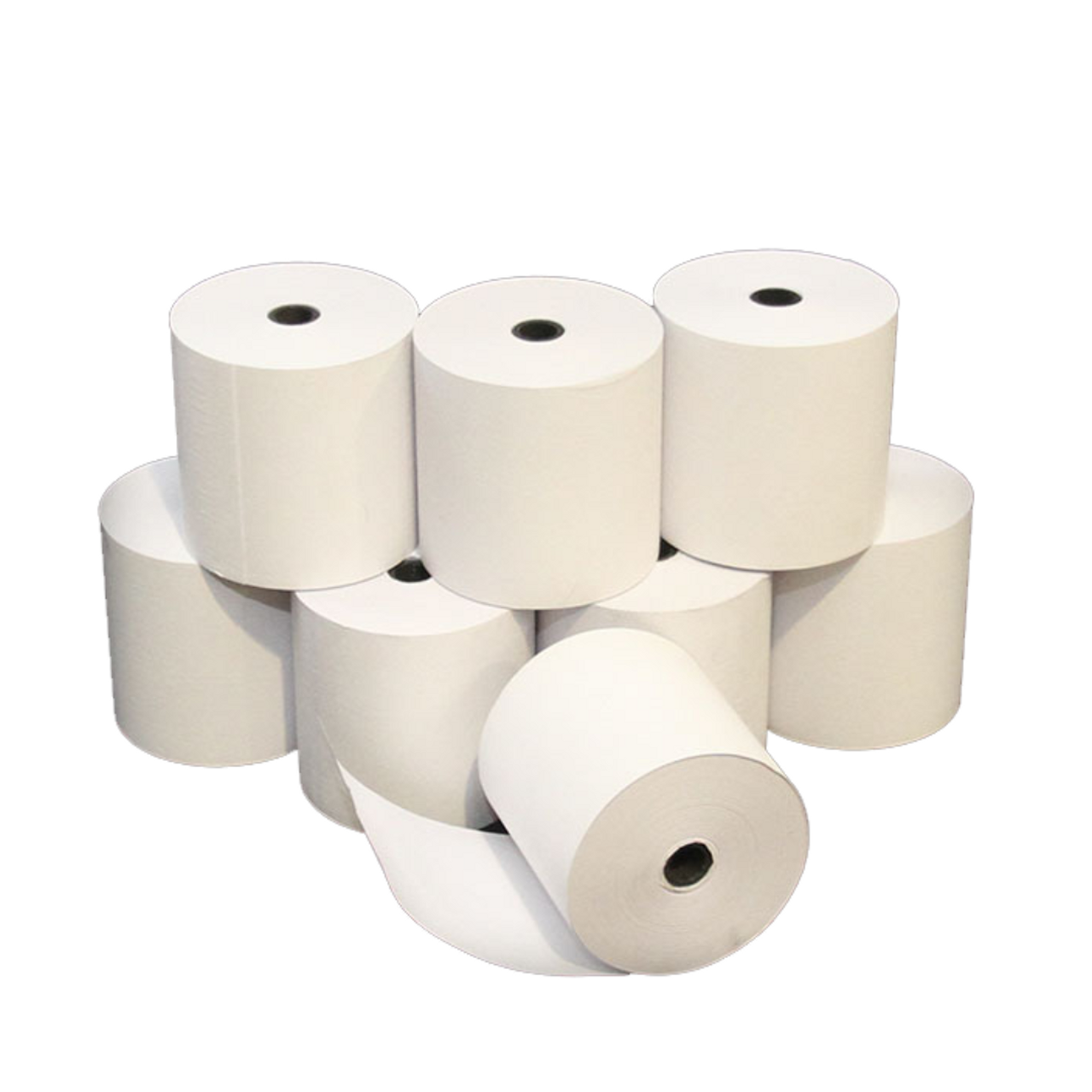Rolling in Heat: The Ultimate Guide to Mastering Thermal Paper Rolls for Business Brilliance
In today’s landscape of logistics and packaging, efficiency is the linchpin that propels businesses toward success. Efficient operations in this sector involve streamlining processes, optimising resource utilisation, and embracing innovative solutions. In logistics, a well-coordinated supply chain ensures the ne often overlooked timely delivery of goods, minimising delays and reducing costs. This not only enhances customer satisfaction but also contributes to a positive brand image. Similarly, in the packaging industry, efficiency is manifested through the judicious use of materials, cutting-edge technologies, and sustainable practices. Streamlined packaging processes not only reduce waste but also contribute to environmental stewardship, aligning businesses with the global push towards sustainability. Ultimately, efficiency in logistics and packaging is a competitive advantage, fostering agility, cost-effectiveness, and customer-centricity, all of which are indispensable elements in a thriving business ecosystem.
One often-overlooked yet critical aspect is the choice of thermal paper rolls, an indispensable component in various industries. In this guide, we will delve into the nuances of thermal paper rolls, exploring their uses, benefits, and tips to ensure your business operates at its peak brilliance.
What is a Thermal Paper?
Thermal paper is a specialised type of paper coated with a heat-sensitive substance that undergoes a chemical reaction when exposed to heat. Unlike traditional paper which requires ink for printing, thermal paper relies on the application of heat to create images or text. This process is commonly used in thermal printers, which are widely employed for tasks such as printing receipts, labels, tickets, and more. The thermal paper coating typically contains a combination of dye and developers. When heat is applied through the thermal print head of the printer, the dye reacts with the developer, causing the paper to change colour and form the desired print. This method eliminates the need for ink cartridges or ribbons, making thermal paper a cost-effective and efficient choice for various industries. Its advantages include faster printing speeds, reduced maintenance, and the ability to produce high-quality, clear prints without the risk of ink smudging. Thermal paper finds extensive use in retail, hospitality, healthcare, and logistics, highlighting its versatility in enhancing printing processes across diverse sectors.
Types of Thermal Paper Rolls
Thermal paper rolls come in various types, each designed to cater to specific printing needs and applications.
Here are some common types:
- Top-Coated Thermal Paper: This type has a heat-sensitive coating on the top surface. It is commonly used for receipts, labels, and tickets, ensuring high-quality prints.
- Back-Coated Thermal Paper: In contrast, the back-coated thermal paper has heat-sensitive coating on the back. This type is suitable for applications where printing needs to be visible from both sides, such as with parking tickets.
- Three-Layer Thermal Paper: Three-layer thermal paper includes a base layer, an imaging layer, and a protective layer. This design enhances durability and resistance to external elements, making it ideal for applications requiring longevity.
- Linerless Thermal Paper: Linerless rolls eliminate the need for backing paper, reducing waste. They are often used in mobile printers and situations where space and environmental concerns are critical.
Uses of Thermal Paper Rolls
- Retail Receipts: Thermal paper rolls are widely used in point-of-sale systems for printing receipts in retail environments. They offer a quick and efficient way to provide customers with transaction details.
- Labels and Stickers: Many industries use thermal paper for printing labels and stickers. This includes logistics for shipping labels, warehouses for inventory management, and various retail applications for product labelling
- Tickets and Boarding Passes: Thermal paper is commonly employed for printing tickets in transportation sectors, such as cinema tickets, airline boarding passes, and public transportation tickets.
- Medical Records and Prescription Labels: In healthcare, thermal paper is used for printing medical records, prescription labels, and patient wristbands due to its quick and efficient printing capabilities.
- ATM and Banking Transactions: ATMs often use thermal paper for printing transaction receipts. Additionally, banks and financial institutions use thermal paper for printing various documents and transaction records.
- Hospitality and POS Systems: Restaurants, hotels, and other hospitality businesses use thermal paper rolls for printing order receipts, invoices, and other transaction records.
- Parking Tickets: Thermal paper is commonly utilised in parking systems for printing tickets. Its quick printing capabilities are beneficial in high-traffic environments.
- Event Tickets: Thermal paper is employed for printing tickets for events such as concerts, sports games, and conferences due to its ease of use and quick printing.
Benefits of Thermal Paper Rolls
- Cost-Effective Printing: Thermal paper eliminates the need for ink or toner, reducing printing costs. This is particularly advantageous for businesses with high-volume printing needs.
- Fast and Efficient Printing: Thermal printers operate at high speeds, providing fast and efficient printing. This is crucial in environments where quick transactions and document printing are essential.
- Space-Saving Design: Thermal paper rolls are compact and require less storage space compared to traditional printing supplies, making them suitable for businesses with limited space.
- Clear and High-Quality Prints: Thermal printing produces clear and high-resolution prints without the risk of ink smudging. This is beneficial for applications where print quality is crucial.
- Ease of Use: Thermal printers are easy to operate and require minimal maintenance. This simplicity makes them user-friendly and suitable for various industries.
- Environmental Considerations: Some thermal paper rolls are produced using eco-friendly materials and processes, addressing environmental concerns and aligning with sustainable business practices.
- No Ink Drying Time: Unlike traditional printing methods, thermal printing does not require drying time for ink. This ensures a continuous and efficient printing process.
Best Practices for Thermal Paper Roll Maintenance
To ensure your business operates at its peak brilliance with the right thermal paper roll, consider the following tips:
- Choose the Right Type of Thermal Paper: Select thermal rolls that are suitable for your specific business needs. Consider factors such as size, coating (top-coated or back-coated), and any special features required for your applications.
- Check Printer Compatibility: Ensure that the chosen thermal paper is compatible with your thermal printer. Check the printer specifications and guidelines provided by the manufacturer to avoid issues such as jamming or poor print quality.
- Optimise Image Quality: Adjust the settings on your thermal printer to optimise image quality. This includes adjusting print density and contrast settings to achieve clear and sharp prints.
- Proper Storage Conditions: Store thermal paper rolls in a cool, dry place away from direct sunlight. Exposure to heat, humidity, or sunlight can affect the quality of the paper and lead to poor print performance.
- Handle with Care: Handle thermal paper rolls with clean and dry hands to prevent oils, dirt, or moisture from transferring to the paper. This helps maintain the integrity of the thermal coating and ensures optimal print quality.
- Regular Printer Maintenance: Follow the manufacturer's recommendations for regular maintenance of your thermal printer. Clean the printhead and rollers as instructed to prevent debris build-up, which can negatively impact print quality.
- Consider Environmental Impact: If environmental sustainability is a priority for your business, consider using BPA-free or eco-friendly thermal paper rolls. This aligns with eco-conscious practices and may appeal to environmentally-conscious customers.
- Test Print Regularly: Conduct test prints regularly to ensure that the thermal paper and printer are working correctly. This proactive approach allows you to identify and address any issues before they impact your day-to-day operations.
- Explore Customisation Options: If branding is essential for your business, explore customisation options offered by suppliers. Custom-printed thermal paper rolls can incorporate logos or specific information, enhancing your brand's visibility on receipts or labels.
- Monitor Inventory Levels: Keep track of your thermal paper roll inventory to avoid running out unexpectedly. Maintain a consistent supply to ensure uninterrupted operations, especially during peak business periods.
- Train Staff on Best Practices: Train your staff on the proper handling of thermal paper rolls and the correct procedures for replacing them in the printer. This minimises the risk of errors and ensures smooth printing processes.
Wrapping Up
Mastering thermal paper rolls is a subtle yet impactful way to enhance your business operations. From cost savings to improved efficiency, the benefits of using thermal paper are undeniable. By understanding the nuances of thermal paper bundles, choosing the right type, and implementing proper maintenance practices, your business can seamlessly roll in the heat and achieve new heights of brilliance in its daily operations.
Are you browsing the internet for quality thermal paper rolls at the best prices online?
POS Sales Australia is the solution to your search.
Browse through our expansive inventory and shop for the perfect thermal paper roll to meet your business needs today! Contact us for any inquiries or speak directly to our POS expert @ 1300 026 062


